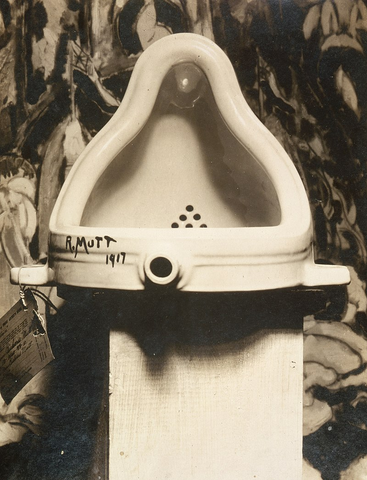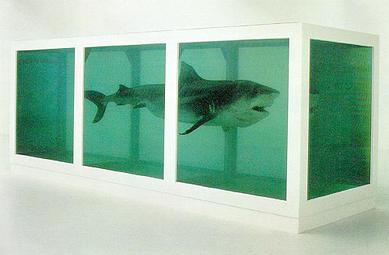What is conceptual art? It’s an approach to art where the concept or the idea is prioritized, becoming more important over the aesthetic and technique used to create a given piece. When introduced, it questioned the art itself, as it broke off from the traditional, aesthetic-focused approach of fine arts and paved the way for modern art movements. In this article, we look closer at this artistic approach – read on if you wish to learn more!
Conceptual Art: Definition
What is the definition of conceptual art? It is an art in which the idea behind the piece is more important than its final form. It has emerged quite recently as an art movement, only in the 1960s, though conceptual works can be dated back a bit further.
Take, for example, Fountain by Marcel Duchamp. Although it was created in 1917, long before the term conceptualism was coined, it is often described as the first conceptual art piece to have been created. Hence, despite the movement emerging in the late 20th century, such works can be seen much earlier on.
What Is Conceptual Art in Practice?
With this brief introduction behind us, let’s discuss what conceptual art is in practice. For that, it’s best to look at a comparative example.
Imagine two sculptors: A is a traditional artist, while B is a conceptual one. The first might be motivated by an idea but still puts a lot of thought and effort into creating a sculpture that will not only depict the concept but also be aesthetically appealing. On the other hand, B will focus only on the idea, disregarding the visual aspects of their work.
This is exactly why conceptual art is often perceived as controversial. After all, it undermined the principles of fine art, which was created to bring a visually pleasing experience to the viewer. What is more, it kickstarted a plethora of art movements in the second half of the 20th century, which proves how important it was (and is) in the history of art.
Conceptual Art: The Most Famous Artists and Their Pieces
Knowing the definition of conceptual art and what it is in practice, it is time to mention the most important representatives of this movement and explore their works. Who made the biggest impact on conceptualism? Here’s a list.
Marcel Duchamp (1887-1968)
Duchamp is often regarded as the father of conceptual art, pioneering the use of everyday objects as art. Even though he created works long before conceptualism was defined and widespread, he remains the author of the most influential works within this movement.
What is Duchamp most famous for? His Fountain (1917) – a ready-made sculpture created from a urinal. You can learn more about him in our article on dadaism art.
Elsa von Freytag-Loringhoven’s reproduction of Duchamp’s Fountain, photo taken by Alfred Stieglitz.

Yoko Ono (born 1933)
Ono is a Japanese multimedia artist known for her avant-garde work, activism, and collaborations with John Lennon. She created multiple famous conceptual art pieces. Her most recognized one is Cut Piece (1964) – a performance in which the artist invites the audience to approach her, cut away pieces of her clothing, and explore the themes of vulnerability, agency, and trust.
Joseph Kosuth (born 1945)
Kosuth is one of the pioneers of the conceptual art movement, who has thrived mostly in installation art. His work was strongly influenced by the role of language and meaning in art, which he explored throughout his pieces.
What is the most famous artwork by Joseph Kosuth? Definitely the One and Three Chairs (1965) – an installation featuring a physical chair, a photograph of the chair, and a definition of “chair” meant to push the viewers to contemplate on the nature of representation and reality.

Damien Hirst (born 1965)
Hirst is a British artist mostly known for his controversial works. He creates pieces that explore themes such as life, death, and consumerism.
Which of Hirst’s works is most famous when it comes to conceptualism? Definitely The Physical Impossibility of Death in the Mind of Someone Living (1991) – a tiger shark preserved in formaldehyde that is meant to confront the viewers with the fragility and transience of life.

The Takeaway
What is conceptual art? It’s the art created to represent a certain idea, with a complete disregard for the aesthetic value of the pieces. Controversial as it may seem, it became widely popular in the late 20th century and revolutionized the way art is perceived. Represented by famous artists, such as Marcel Duchamp or Damien Hirst, it was the basis for many modern art movements that still thrive nowadays.
Did you like this article? Then you should also read: What Is Abstract Art? Complete Guide
